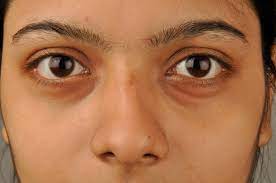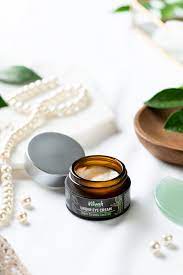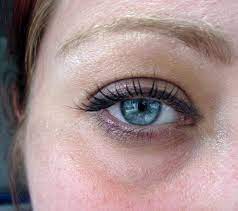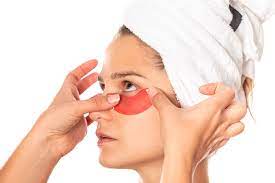Dark circles – the bane of many a morning riser. But could your beloved cup of coffee be the culprit? Join us as we unravel the mysteries surrounding this age-old question and discover if there’s more to your morning brew than meets the eye.
Does drinking coffee cause dark circles ? Drinking coffee itself does not directly cause dark circles under the eyes. Excessive consumption of coffee can lead to dehydration and poor sleep, both of which may contribute to the development of dark circles. Dark circles can be the result of various factors, including genetics, sleep deprivation, aging, and lifestyle habits.
What Are Dark Circles and Why Do They Appear?
Dark circles under the eyes, often a source of cosmetic concern, appear as darkened areas around the eyes. They can make an individual look tired, aged, or unwell, impacting self-esteem and social perceptions. The causes of dark circles are multifaceted:
Genetics: Inherited traits can predispose individuals to dark circles. Those with a family history of dark circles are more likely to develop them.
Ageing: As we age, our skin loses collagen and becomes thinner, making the blood vessels beneath more visible. This visibility contributes to the appearance of dark circles.
Lifestyle Factors: Lack of sleep, high stress levels, and poor diet can exacerbate the appearance of dark circles. Sleep deprivation, in particular, causes the skin to become dull and pale, revealing the dark tissues and blood vessels beneath.
Skin Pigmentation Disorders: Conditions like hyperpigmentation can darken the skin beneath the eyes.
Dehydration: Insufficient hydration can cause the skin to look dull and the eyes to appear sunken, both of which can make dark circles more pronounced.
Sun Exposure: Excessive exposure to the sun can increase melanin production, leading to pigmentation in the under-eye area.
The Impact of Caffeine on Dark Circles

Caffeine, widely consumed in beverages like coffee and tea, has both direct and indirect effects on dark circles:
- Vasoconstrictive Properties: Caffeine can constrict blood vessels, which might temporarily reduce the appearance of dark circles caused by vascular issues.
- Dehydration: Excessive caffeine consumption can lead to dehydration, a factor that can worsen the appearance of dark circles. It’s important to balance caffeine intake with adequate water consumption.
- Skincare Products: Many skincare products targeted at reducing dark circles contain caffeine. Its ability to constrict blood vessels and reduce puffiness can make these products effective for temporary relief.
- Antioxidant Effects: Caffeine also possesses antioxidant properties that can benefit skin health, potentially improving the appearance of the under-eye area.
Can Eye Creams Really Help Reduce Dark Circles?

Eye creams are a popular solution for dark circles, but their effectiveness varies:
Active Ingredients: Eye creams with ingredients like caffeine, vitamin K, retinol, and hyaluronic acid can help reduce the appearance of dark circles. Caffeine constricts blood vessels, reducing puffiness, while vitamin K may help with blood coagulation and circulation, addressing dark circles due to vascular issues.
Moisturization: Well-formulated eye creams can hydrate and plump the skin, making it appear more luminous and reducing the visibility of dark circles.
Consistent Use: For noticeable results, consistent and long-term use of eye creams is necessary. However, it’s important to manage expectations, as creams may not entirely eliminate dark circles, particularly if they are genetically predisposed or due to aging.
Dermatological Treatments: In cases where eye creams are insufficient, dermatological treatments like laser therapy or fillers may be more effective, targeting underlying issues like pigmentation or skin laxity.
The Relationship Between Puffy Eyes and Dark Circles
Puffy eyes and dark circles often coexist, impacting the overall appearance of the eye area. The relationship between them involves several interconnected factors:
Fluid Accumulation: Puffiness under the eyes is typically due to fluid buildup. This swelling can cast shadows, creating or exacerbating the appearance of dark circles.
Allergies and Sinus Problems: Allergies and sinus issues can cause both puffiness and darkening under the eyes. Nasal congestion, in particular, can lead to enlarged blood vessels that increase under-eye darkness.
Sleep Deprivation: Lack of adequate sleep can lead to both puffiness and dark circles. Fatigue can cause the skin to become dull and the eyes to appear more sunken, accentuating both conditions.
Ageing: As we age, the skin around the eyes becomes thinner and more prone to puffiness, while the loss of fat and collagen can deepen the appearance of dark circles.
Skincare Routines to Combat Dark Circles
A targeted skincare routine can be effective in managing dark circles:
Gentle Cleansing: Use a gentle cleanser to avoid irritation and drying out the delicate skin around the eyes.
Hydrating Eye Creams: Select eye creams that are specifically formulated to address dark circles. Ingredients like caffeine, vitamin K, retinol, and hyaluronic acid can be beneficial.
Sun Protection: Daily use of sunscreen around the eye area can prevent further darkening caused by UV exposure.
Adequate Hydration: Keeping the skin well-hydrated can improve overall appearance and reduce the prominence of dark circles.
Healthy Diet: A diet rich in antioxidants, vitamins, and minerals can support skin health and reduce the appearance of dark circles.
Regular Sleep Patterns: Maintaining a consistent sleep schedule helps reduce the tired look and improves overall skin health.
Seeking Professional Help: When to Consult a Dermatologist
Consulting a dermatologist becomes important in the following scenarios:
Persistent Dark Circles: If dark circles persist despite proper skincare and lifestyle changes, a dermatologist can offer specialized treatments.
Severe Discoloration: Excessive darkening may indicate underlying health issues that require professional assessment.
Allergic Reactions or Skin Irritations: If dark circles are accompanied by itching, redness, or swelling, it may be an allergic reaction or skin condition needing medical attention.
Interest in Advanced Treatments: For those considering treatments like laser therapy, fillers, or chemical peels, a dermatologist can provide safe and appropriate procedures tailored to individual needs.
A dermatologist can offer a comprehensive evaluation, recommend effective topical treatments, and provide advanced cosmetic procedures if needed. They can also rule out any serious underlying health conditions that might be causing or contributing to the appearance of dark circles.
Dehydration and Its Role in Causing Dark Circles
Dehydration is a significant factor that contributes to the appearance of dark circles under the eyes. When the body doesn’t receive enough water, several changes occur that can affect the under-eye area:
Skin Dullness: Dehydration can cause the skin to lose its plumpness and elasticity, making it appear more dull and pale. This accentuates the dark circles, as the underlying blood vessels become more visible.
Sunken Eyes: Lack of adequate hydration can lead to a sunken appearance around the eyes. This can create a shadow, giving the illusion of dark circles.
Thin Skin: The skin around the eyes is already thin, and dehydration can exacerbate this, further highlighting dark circles.
To combat dark circles caused by dehydration, it’s crucial to drink sufficient water and use hydrating skincare products. Incorporating a diet rich in water-containing fruits and vegetables can also help maintain hydration levels.
The Thin Skin Dilemma: How It Affects Dark Circles

The skin around the eyes is the thinnest on the body, making it particularly vulnerable to showing signs of stress, aging, and other issues:
Visibility of Blood Vessels: Thin skin makes the blood vessels beneath more visible, contributing to the appearance of dark circles.
Aging Effects: As we age, the skin loses collagen and becomes even thinner, exacerbating the visibility of dark circles.
External Factors: Factors such as sun exposure and environmental stressors can further thin and damage the skin, intensifying dark circles.
Addressing the thin skin dilemma involves using products that promote collagen production and skin elasticity, like those containing retinol, peptides, and hyaluronic acid. Protecting the area from sun damage with a good sunscreen is also essential.
The Effect of Lifestyle Choices on Dark Circles
Lifestyle choices play a pivotal role in the development and severity of dark circles:
Sleep Quality and Quantity: Lack of adequate and quality sleep can lead to tired, dull skin and accentuate dark circles. Ensuring regular and restful sleep is key to reducing their appearance.
Diet and Nutrition: A balanced diet rich in vitamins C and K, antioxidants, and omega-3 fatty acids can improve skin health and reduce dark circles.
Alcohol and Smoking: These can exacerbate dark circles by causing dehydration and affecting the delicate skin around the eyes.
Stress Management: High stress levels can impact skin health and worsen dark circles. Practicing stress-reduction techniques like meditation or yoga can be beneficial.
Regular Exercise: Regular physical activity improves circulation, which can help reduce the appearance of dark circles.
By making conscious lifestyle choices, individuals can significantly impact the severity and prevalence of dark circles. A holistic approach, combining good skincare practices with a healthy lifestyle, is often the most effective strategy.
Advanced Treatments and Solutions for Dark Circles
For those seeking more significant results in combating dark circles, several advanced treatments and solutions are available, often involving dermatological procedures or cosmetic interventions:
Laser Therapy: Laser treatments can help reduce dark circles by targeting pigmentation and promoting collagen production. Different types of lasers are used depending on the specific cause of the dark circles, such as pigmentation or blood vessels.
Chemical Peels: These peels involve the application of a chemical solution to the under-eye area, which exfoliates the skin and encourages new, healthier skin growth. This can reduce the appearance of dark circles, especially those caused by hyperpigmentation.
Fillers: Injectable fillers can be used to treat dark circles caused by thinning under-eye skin or fat loss. These fillers can plump up the area, reducing the shadow cast by hollow under-eye troughs and making dark circles less noticeable.
Microneedling: This treatment involves using fine needles to create tiny punctures in the skin, stimulating the body’s healing process and promoting collagen production. Microneedling can improve skin texture and potentially lessen the appearance of dark circles.
PRP (Platelet-Rich Plasma) Therapy: PRP involves injecting a concentration of the patient’s own platelets into the under-eye area. This can stimulate collagen production and improve skin quality, helping to reduce dark circles.
Topical Retinoids: Prescription-strength retinoids can help improve skin texture and reduce pigmentation. These should be used under the guidance of a dermatologist, as the skin around the eyes is particularly sensitive.
Skin Lightening Creams: Creams containing ingredients like hydroquinone, kojic acid, or vitamin C can help lighten under-eye hyperpigmentation, reducing the appearance of dark circles.
Proper Sun Protection: Regular use of sunscreen can prevent worsening of dark circles due to sun exposure, which can exacerbate pigmentation issues.
Surgical Options: In some cases, surgery may be an option, particularly for dark circles caused by structural issues like prominent tear troughs or fat herniation.
It’s important to consult with a dermatologist or a cosmetic specialist to determine the most appropriate treatment for your specific type of dark circles. These professionals can offer tailored advice and ensure that treatments are safe and effective for your individual skin type and condition.
Q: What are the main causes of under-eye bags and dark circles?
A: Under-eye bags and dark circles can be caused by various factors, including lack of sleep, genetics, aging, and skin dehydration. Allergies, sinus issues, and certain lifestyle habits can also contribute to their appearance.
Q: How does caffeine help in reducing the appearance of dark eye circles?
A: Caffeine can help in reducing the appearance of dark eye circles by constricting the blood vessels around the eyes, which helps in decreasing puffiness and dark circles. It also has anti-inflammatory properties that can help in reducing the appearance of under-eye bags.
Q: Can drinking coffee help in reducing under-eye bags and dark circles?
A: Drinking coffee may provide some benefits in reducing under-eye bags and dark circles due to its caffeine content. Excessive consumption of caffeine can lead to dehydration, which can exacerbate the appearance of dark circles and under-eye bags.
Q: Are there any skincare products containing caffeine that can help in treating under-eye bags and dark circles?
A: Yes, there are several skincare products containing caffeine and other ingredients such as vitamin K that are specifically designed to target under-eye bags and dark circles. These products can help in reducing puffiness and enhancing the appearance of the delicate skin around the eyes.
Q: What are the potential side effects of using caffeine-based products to reduce under-eye bags?
A: While caffeine-based products can be effective in reducing under-eye bags and dark circles, some individuals may experience minor side effects such as skin irritation or sensitivity. A patch test before using such products and to consult with a dermatologist if any adverse reactions occur.
Q: Can caffeine help in reducing wrinkles around the eyes?
A: Caffeine’s anti-inflammatory properties and its ability to improve blood circulation can potentially aid in reducing the appearance of fine lines and wrinkles around the eyes. It’s essential to combine caffeine-based treatments with a comprehensive skincare routine for optimal results.
Q: How can I naturally reduce the appearance of under-eye bags and dark circles?
A: Natural remedies such as applying cold compresses, using tea bags, getting enough sleep, and staying hydrated can all contribute to reducing the appearance of under-eye bags and dark circles. Maintaining a healthy lifestyle and avoiding allergens can also help in minimizing their appearance.
Q: Can caffeine-based products protect the skin around the eyes from sun damage and skin cancer?
A: Caffeine has been found to possess some photoprotective properties that can help in protecting the skin from UV damage. While it’s not a replacement for sunscreen, skincare products containing caffeine may contribute to the overall protection of the delicate skin around the eyes.
Q: Can using a concealer effectively hide under-eye bags and dark circles?
A: Yes, using a concealer can be an effective way to temporarily hide under-eye bags and dark circles. Look for concealers that are specifically designed for the under-eye area and choose a shade that matches your skin tone to achieve the best results.
Q: How do under-eye bags and dark circles vary in appearance among individuals?
A: The appearance of under-eye bags and dark circles can vary widely among individuals due to factors such as skin tone, genetics, and lifestyle habits. Some people may experience more prominent under-eye bags or darker circles than others and may require personalized approaches to address these concerns.


Leave a Reply